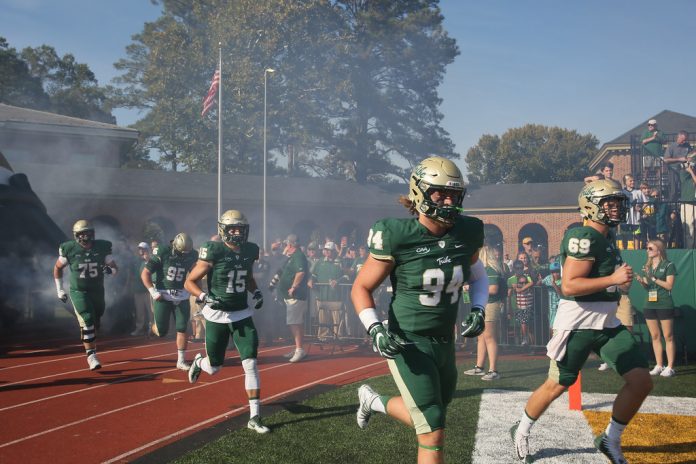Going to a school with a Division I football team, albeit a less well-known one, is certainly an experience. On game day, parking options on campus disappear, and seemingly everyone on campus is wearing green and gold and rushing from tailgates to darties, or maybe to and from the game if they’re invested in the College of William and Mary’s football team that day. However fun the community surrounding watching football may be, there are a lot of important concerns that are often swept under the rug to the detriment of some players’ safety.
First and foremost, football is an injury-prone contact sport. According to the NCAA, football players are injured “8.1 times per 1,000 athlete exposure,” which is considered to be either a game or practice, with over 47,000 reported injuries annually. Comparatively, swimming and diving have only “1.7 injuries per athlete exposure.” I recently had the opportunity to speak to Erik Korem, the senior associate athletic director for student-athlete high performance, regarding what the College is doing to help reduce injuries. The College is admirably making an effort to make football a safer sport, ranging from hiring a doctor staffed specifically for helping student athletes and working to reduce injuries through how tackles are made. These changes deserve applause.
However, something that worries me is an issue both at the College and in the greater field of college football, and in most sports in general. Attempting to reduce injuries incurred on the football field during the years played in college is admirable, but athletes at the College do not receive any support or any follow-up after they graduate, which seems to be consistent with most college athletic programs. With the high possibility of long-term injuries like tendinitis, arthritis or Chronic Traumatic Encephalopathy, at the very least, efforts to prevent injuries should extend beyond the four or five years of a collegiate athletic career.
In a 2018 study on deceased football players’ brains done by researchers from the VA-BU-CLF Brain Bank, 86 percent of college football players were posthumously diagnosed with CTE, including at least one football player at the College. While the study is not perfect and its authors mention potential issues arising from self-selection bias, its results are troubling. While research has not yet conclusively identified all the symptoms of CTE, the Mayo Clinic identifies it as “brain degeneration likely caused by repeated head traumas,” with symptoms such as cognitive impairment, substance abuse and suicidal thoughts or behavior. The Mayo Clinic also has conducted research that did not find CTE in control brains that were not exposed to brain trauma from contact sports. The research is still growing regarding the potential linkage between CTE and high-contact sports such as football, but it seems that with the high likelihood of lifelong injuries being incurred in football, schools ought to take more of a responsibility in following up with their players after their time at the school. I would hope that they could provide resources to those players struggling with injuries from their collegiate careers, but at the very least it is an important step to aid a college in making their sports the safest they can be.
Korem made a good analogy about the risks of playing sports when he spoke to me, which is that when doing anything, even something as common as driving a car, you accept certain risks to gain a reward. When playing football, a player chooses to accept the risk of injury for the reward of whatever playing means to them. There is nothing wrong with that. However, when the College does not make any attempts to track athletes’ injuries after college, there is no way to fairly tell potential incoming players what the risks are. The research is beginning to point to high rates of CTE in college football players, but it is not yet definite. If the College wants to do right by its players, and any of its athletes, it needs to maintain contact with athletes after graduation. They are still members of our community, and just because an injury does not manifest in college does not mean it was not incurred in college.
I have never played football, so I don’t think it’s too fair of me to tell football players what to do. If playing football sparks joy for you, you do you, and I wish you the best. However, those of us who consume football, in going to games, watching them on ESPN, or buying merchandise, need to seriously reconsider our choices. Football is an injury-prone sport, both during the game and with other injuries appearing years later tied to the high-contact nature of football. Why does such a large part of our community have to be around such a dangerous game? Why do we have to fuel an industry that makes billions of dollars off of unpaid athletes? If no one watched football, it would be a much smaller and less relevant phenomenon. We, the consumers of football both in Williamsburg and throughout the United States, have the power to support teams that are making strides towards safety and supporting athletes after their playing careers end, and we can’t pretend differently.
Email Anna Boustany at aeboustany@email.wm.edu.





























